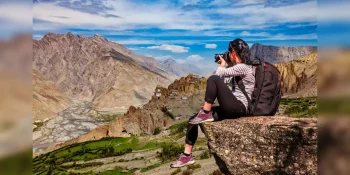Ranthambore National Park, located in the Sawai Madhopur district of the Indian state of Rajasthan, is a treasure trove of natural wonders and a testament to the rich biodiversity of the region. Spread over an area of approximately 392 square kilometers, the park is renowned for its diverse flora and fauna, as well as its historical significance. Let us embark on a journey to explore this captivating sanctuary.
The park’s landscape is a captivating blend of dry deciduous forests, open grasslands, meandering streams, and rocky hills. It is surrounded by the ancient Ranthambore Fort, which adds a touch of majesty to the entire setting. This juxtaposition of wilderness and heritage creates a unique ambiance that sets Ranthambore apart from other national parks.
The jewel in the crown of Ranthambore is undoubtedly its thriving population of Royal Bengal tigers. These majestic creatures are the park’s star attractions, and Ranthambore is considered one of the best places in the world to spot them in their natural habitat. Embarking on a safari through the park, visitors can witness these elusive felines prowling through the forests or relaxing by the water bodies, a sight that leaves an indelible impression.
However, the tigers are not the only inhabitants of this diverse ecosystem. Ranthambore is home to a wide array of wildlife, including leopards, sloth bears, wild boars, hyenas, jackals, and numerous species of deer. The park is also a bird lover’s paradise, with over 300 species of avifauna. The melodious calls of peacocks, the vibrant plumage of kingfishers, and the soaring flight of eagles create a symphony of nature that resonates throughout the park.
To explore this enchanting wilderness, the park offers various safari options. Jeep safaris are the most popular choice, providing an up-close and personal experience with the wildlife. Expert guides accompany visitors, sharing their knowledge and ensuring a safe and informative journey. Another option is the canter safari, which accommodates a larger number of people and offers a unique perspective from an elevated position.
Beyond its wildlife, Ranthambore is steeped in history. The Ranthambore Fort, a UNESCO World Heritage Site, towers over the park and serves as a reminder of the region’s illustrious past. Constructed in the 10th century, the fort witnessed the rise and fall of numerous dynasties and played a significant role in shaping the history of Rajasthan. Exploring its ancient architecture, royal palaces, and temples is like stepping back in time.
Efforts to preserve Ranthambore’s natural heritage and protect its inhabitants have been underway for several decades. The park’s success in conserving the tiger population has been commendable, and it serves as a shining example of wildlife conservation in India. Local communities and government initiatives work together to ensure the sustainable development of the region while safeguarding its ecological balance.
In conclusion, Ranthambore National Park is a magical destination where wildlife and history intertwine. Its picturesque landscapes, abundant wildlife, and rich cultural heritage make it a must-visit for nature enthusiasts and history buffs alike. Whether it’s spotting a majestic tiger in the wild, immersing oneself in the beauty of the surroundings, or delving into the historical mysteries of the fort, Ranthambore promises an unforgettable experience that will leave visitors longing to return time and again.









